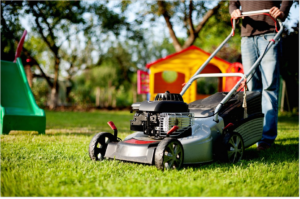Among the most critical practices to keep the lawn attractive and healthy is proper mowing. Like other plants, glass also grows fast, and you need to clip the growing points off to allow more nutrients and water to the roots. However, keeping your lawn tidy and in the best shape becomes complex as the grass becomes denser. Luckily, you can mow it properly.
Below are some lawn mowing tips:
Sharpen Blades for a Professional Finish
If you need a professional finish, sharp blades are critical. The sharper the blades, the cleaner your cuts, resulting in less stress and shock while reducing mold and bacteria risk. When you cut with dull blades, the grass rip, tear, and shred from the roots. Since grass is a living organism, you need a gentle lawn to avoid damaging the roots and get better results. You can sharpen your mower blades three times a year or switch for new ones.
Consider Weather Conditions
The best time to mow grass is early evening as it tends to be driest. Also, it’s when the hot part of the day pass and the grass have time to recover. However, avoid mowing when the ground is wet, as it can clog the mower or lead to uneven trims. The wet lumps of grass on the lawn smother underneath, leading to brown spots.
Mulch While Mowing
 Before firing up a lawnmower, some people attach a bag to collect grass. Although grass-clipping-free lawn is attractive, leave clippings on the ground when you mow regularly. The tender and young grass blades quickly get absorbed into the soil to deliver nutrients naturally. However, when you don’t trim for some time and the grass is long, you can use a bag to collect the clippings. Although the extra-long grass contains more nutrients, its length can smother the emerging shoots preventing their growth.
Before firing up a lawnmower, some people attach a bag to collect grass. Although grass-clipping-free lawn is attractive, leave clippings on the ground when you mow regularly. The tender and young grass blades quickly get absorbed into the soil to deliver nutrients naturally. However, when you don’t trim for some time and the grass is long, you can use a bag to collect the clippings. Although the extra-long grass contains more nutrients, its length can smother the emerging shoots preventing their growth.
Adjust the Mower Height
You need to set your mower height about 3 inches high and only cut one-third of the grass top. It might result in more frequent cuttings, but the longer blades support developing more roots, deeper shoots, making it easy for roots to locate nutrients and water in the soil. Besides, longer blades make it difficult for weeds to establish in your lawn to give a thick, green carpet appearance. Cutting grass too short forces energy and nutrients into growing blades than deepening roots.
